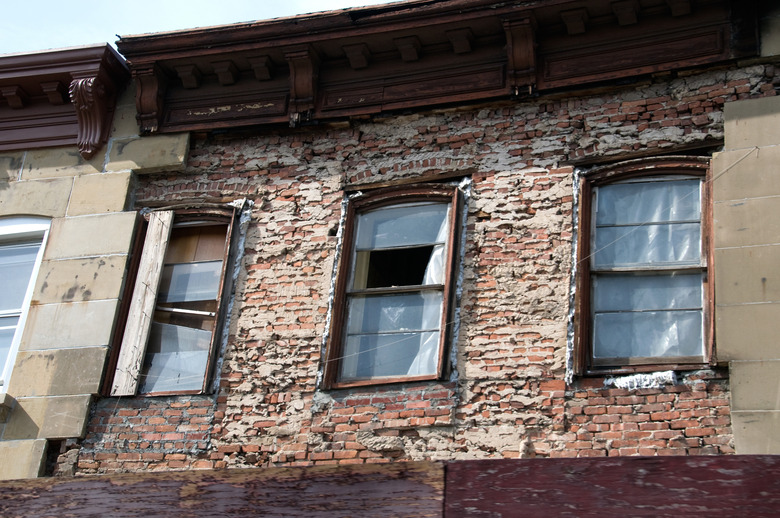Causes Of Brick Delamination
Brick delamination, a situation in which a brick wall or structure begins to fall apart in layers, is a troublesome malady of many buildings. Although brick delamination primarily effects old and undermaintained structures, homeowners are sometimes surprised to find that even relatively newer brick homes are at risk. There are known causes of brick delamination; some are more problematic than others.
Step 1
Moisture is a common cause of brick delamination and is often a culprit when newer brickwork falls victim to delamination unusually early. Bricks of poor quality tend to be more porous, and are prone to absorbing more water than bricks of higher quality. Water expands when it freezes, so when trapped water freezes and expands in bricks, the brick is in danger of spalling. "Spalling" is a term for a brick that has begun to flake or crack. When the bricks along a wall all experience spalling, brick delamination begins to occur.
Salt
Step 1
Brick buildings constructed in coastal areas may be affected by salt deterioration. Salt's most damaging effects work against the softer mortars used in brickwork over a half century ago, so older structures tend to be more vulnerable. As the salt causes the mortar to deteriorate, bricks will begin to stack downwards, causing delamination or even the collapse of a structure's external walls. Salt crystals may also deteriorate the bricks themselves, causing them to flake apart.
Step 2
- Moisture is a common cause of brick delamination and is often a culprit when newer brickwork falls victim to delamination unusually early.
- As the salt causes the mortar to deteriorate, bricks will begin to stack downwards, causing delamination or even the collapse of a structure's external walls.
Construction Technique
Step 1
Unfortunately, not all cases of brick delamination are from outside factors. Hastily built structures, particularly those constructed during rapid expansion, often employ tricks and short cuts that threaten the long-term health of the brickwork. Masons would sometimes not install headers to brick layers, or would quickly tie together inner and outer layers of brick with twisted wire. While these techniques often provided homeowners with a uniform look, structurally the brick walls are in danger of peeling apart.
Age
Step 1
The age of a brick building is the most prevalent cause of brick delamination. Exposed to many factors, from previous occupants to persistent weather, and coupled with dated construction techniques, many older homes face the danger of brick delamination. While a sturdy and well-built brick structure may last for centuries, older brick-and-mortar buildings require special maintenance to avoid spalling and eventual deterioration.
Step 2
- Unfortunately, not all cases of brick delamination are from outside factors.
- While these techniques often provided homeowners with a uniform look, structurally the brick walls are in danger of peeling apart.
